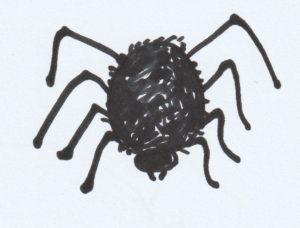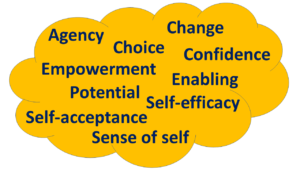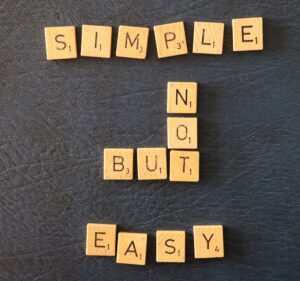
As an Alexander teacher, I’m often asked for advice about some of the practicalities of daily life – how can we use the principles of the Alexander Technique to make things a bit easier for ourselves ?
One area that I get asked about all the time is sleep. So, here are a few of my thoughts on the matter. You might find it worth exploring some of these if you are someone who sometimes, or often, struggles to sleep well.
I’m going to start here with some basic stuff about the practicalities surrounding this activity called sleep – something that we might spend around a third of our lives doing! Then, in my next post, I’ll talk a bit about our attitudes, beliefs and general approach to sleeping and how we can use the Alexander Technique to help us sleep well.
Practicalities
The types of mattress and pillow that we use is an individual choice and depends on many factors. Without looking into it with you personally, I can only give general guidance. So, I’m offering this guidance here as a starting point for you to explore from.
Pillows:
So, first things first – as a general principle that relates to anything we do – we are always looking to maximise the support that we can receive, in order to help lessen unnecessary holding patterns (tension). This means that I would always look for a firm pillow that can fully support the weight of my head.
The next question is whether you tend to spend most time sleeping on your back, your side, or your front?
If you sleep on your side: Imagine for a moment lying on your side on a firm surface such as the floor. You’d probably find that your head is at quite an angle, tilted downwards towards the floor. It’s not hard to guess how likely it is that lying like this over extended periods could lead to a bit of neck strain or even pain. Imagine now that you have a firm bolster or foam block under the side of your head that spans the same distance as that between your head and the end of your shoulder – here your head would be level and fully supported. Although, no conventional pillow will give quite as much support as a foam block or flat bolster, perhaps you can see that with a firm pillow (or perhaps even two) and this type of height, that your head will be well supported?
If you sleep on your back: Let’s begin by following the same principle of looking for as much support as possible and not leaving ourselves at ‘awkward angles’. Notice that when lying on your back on the floor, there will generally be a somewhat smaller distance between the floor and the back of your head, compared with above (note: the extent of this varies a lot between individuals according to their own anatomy). So, this means that you would also be looking for a firm pillow but one that is likely to be not as thick as the one described above for lying on your side. If you look into this, you’ll find that some pillows are described as for either back or side sleeping and are sized accordingly.
If you sleep on your front: Here again, I would suggest that you are looking for a firm pillow to give the maximum support, so choosing one of the height that best fits the size of the gap that would exist between your head and the bed.
Mattress:
The next time you’re about to get another mattress, here are a few things to think about. Again, begin with the question of how we can best support ourselves, and then explore from there.
So, here is another general principle – we evolved to support ourselves via our bony areas – this means our feet when we are standing, our sitting bones when we are sitting, and then when we are lying down it is the back of the head, the shoulder blade area and the back of the pelvis. Weight transfers down through our bony areas and the support filters back up (this is Newton’s third law – for every action there is an equal and opposite reaction; in other words an upwards push from the ground, a support). We evolved to live in a field of gravity and this support automatically stimulates our capacity for uprightness in standing, sitting and moving. Of course we don’t always allow this finely tuned system to thrive as our habits can easily get in the way. Let’s take the example of how we tend to sit. Rather than balancing easily on our sitting bones, we can easily find ourselves either slumped, or rigidly trying to sit up straight. There are many reasons that neither of these options serve us well. An extreme example of this is people developing deep vein thrombosis (DVT) after a long-haul flight. It’s well known that a long period of time being immobile is a major contributor to a DVT. However, less well recognised is knowing that if most of the body weight passes down through the thighs, rather than through the sitting bones, the flesh is compressed and blood cannot flow as well as it should.
In what way does considering how best to support our anatomy relate to mattresses? Even when lying down we want to retain some of our natural ‘springiness’ rather than just slumping into a morass. So, personally speaking, I always look for as firm a mattress as I can get – but I do recognise that this can take some getting used to!
Memory foam mattresses are very popular but I’m not a fan. I’m sure they can initially give a feeling of comfort but I would ask how well are they supporting you in the long term? As humans, we are extremely adaptable. We can easily mould ourselves to soggy sofas, squishy mattresses, and contorted car seats. We may feel that they are ‘comfortable’ but that doesn’t mean that they are particularly good for us in the long term. This is because they give insufficient support in the right areas (our bony weight-transmitting areas), so they tend to deaden, rather than enhance that natural springiness.
Hope some of that provides food for thought. Yet, in any discussion of ‘ergonomics’, the most important factor is the ‘human factor’ – so that will be the topic of my next post. I’ll talk about how we can use the Alexander Technique to help us if we (still) sometimes have problems sleeping.










